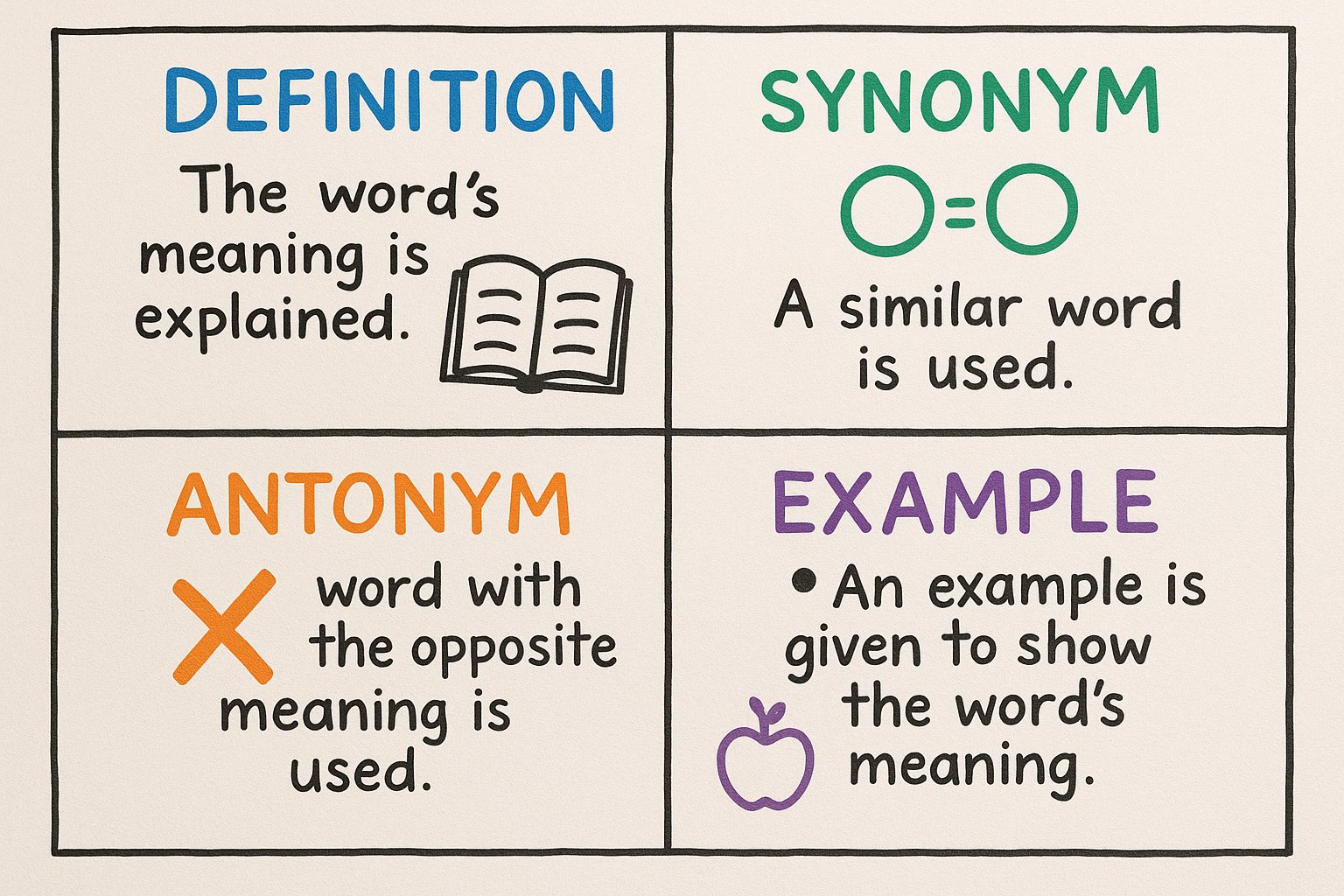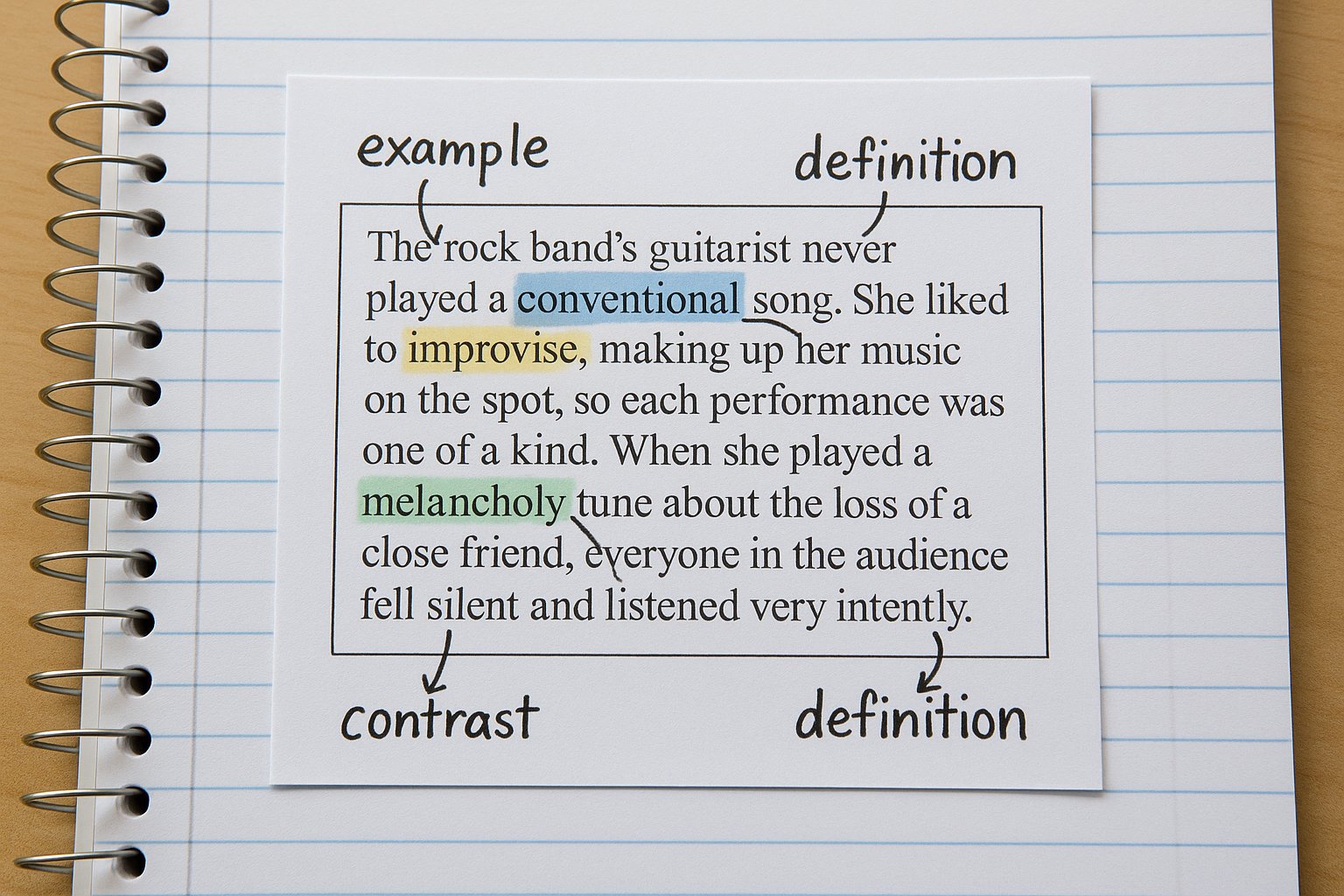Vocabulary · Context Clues
Middle School Context Clues Strategies: 10 Mini-Lessons for Grades 6–8

Why Context Clues Still Matter in Middle School
By grades 6–8, students have seen context clues before—but many still default to “I don’t know this word” and wait for someone to tell them. Teaching context clues in middle school is less about introducing the concept and more about tightening the habit: pause, look around the word, and use the text to make a smart guess.
Strong context-clue skills help students tackle complex texts, standardized tests, and real-world reading. The goal is not perfect dictionary definitions. The goal is: “Can you get close enough to keep reading and make sense?”
The Four Big Context Clue Types Students Should Know
You can show students dozens of context clue types, but in practice, most middle school passages lean on a few big ones. Keep it simple:
- Definition clues: The word is directly defined in the sentence or next to it.
- Restatement/synonym clues: The author restates the word using easier language.
- Contrast/antonym clues: A word like but, however, or instead signals an opposite idea.
- Example clues: Examples show what the word is like in real life.
Once students can identify these, you can move into trickier situations: tone, connotation, and “best fit” meanings on multiple-choice questions.

Mini-Lessons 1–5: Whole-Class Routines
1. “Guess, Check, Confirm” Routine
Project a short paragraph with one bolded word. Students:
- Make an initial guess based only on the word itself.
- Use surrounding sentences to check and revise their guess.
- Compare with a quick dictionary definition to confirm.
This routine trains them to treat context clues as a habit, not a one-time trick.
2. Type-It-Up Sort
Give students 6–8 sentences that use context clues in different ways. In pairs, they sort them into four categories: definition, synonym, antonym, or example. Then they highlight the clue words that helped them decide.
3. Highlight the Helper Words
Show a single paragraph and have students highlight “helper words”: because, for instance, or, however, instead, although, including. Those tiny words often signal the type of context clue being used.
4. Quick Match Warm-Up
Put three sentences on the board, each with a bolded word. Underneath, show three possible meanings. Students match each sentence to the correct meaning using context clues only. This makes a perfect 3–5 minute bell ringer.
5. Wrong-Answer Detective
Show a sample test-style question with four answer choices. Ask students to cross out the worst answer first, then the next, explaining which context clues make those options impossible. This models how to think on standardized tests.
Mini-Lessons 6–10: Small Group & Independent Practice
6. Build-Your-Own Context Clue Sentence
Give students a challenging word and a type of clue (“use an antonym,” “use an example”). Their job is to write a sentence that clearly shows the meaning using that type. This pushes them from just identifying clues to creating them.
7. Context Clues Detective Passages
Provide a short passage with 3–4 underlined words. Students annotate right in the margin: they circle context clues, label the type (D/S/A/E), and write a one-sentence guess of each word’s meaning.
8. Partner Teach-Back
Each partner gets a different short passage with two bolded words. They use context to figure out the meanings, then “teach” their words to the other person by explaining which clues helped them.
9. Context Clue Choice Boards
Create a simple 3×3 choice board with tasks like “Write a tweet explaining a new word using an example,” “Draw a quick comic showing a word’s meaning,” or “Create three synonyms from context.” Let students pick any two boxes to complete.
10. Digital Practice with Games
Use interactive games (like an ABZ context clues game) where students must choose the best meaning or pick the sentence that gives the clearest clue. Gamified practice keeps repetition from feeling boring.

From Guessing to Strategic Reading
When context clues are taught as a quick guessing trick, students treat them like a last resort. When you build them into daily routines, mini-lessons, and reading tasks, students start to see unknown words as puzzles they can break open.
Use these 10 mini-lessons to move your students from “I don’t know this word” to “Let me check the sentence and figure it out.” Once they own that habit, every complex text in your room becomes a little more approachable.